This post may contain affiliate links. See my disclosure policy.
This Pomegranate Molasses Recipe is sweet, tangy, and made with just three simple ingredients. Learn how to make your own homemade pomegranate molasses at home and enjoy this essential Middle Eastern ingredient in stews, dips, dressings, or drizzled over desserts.
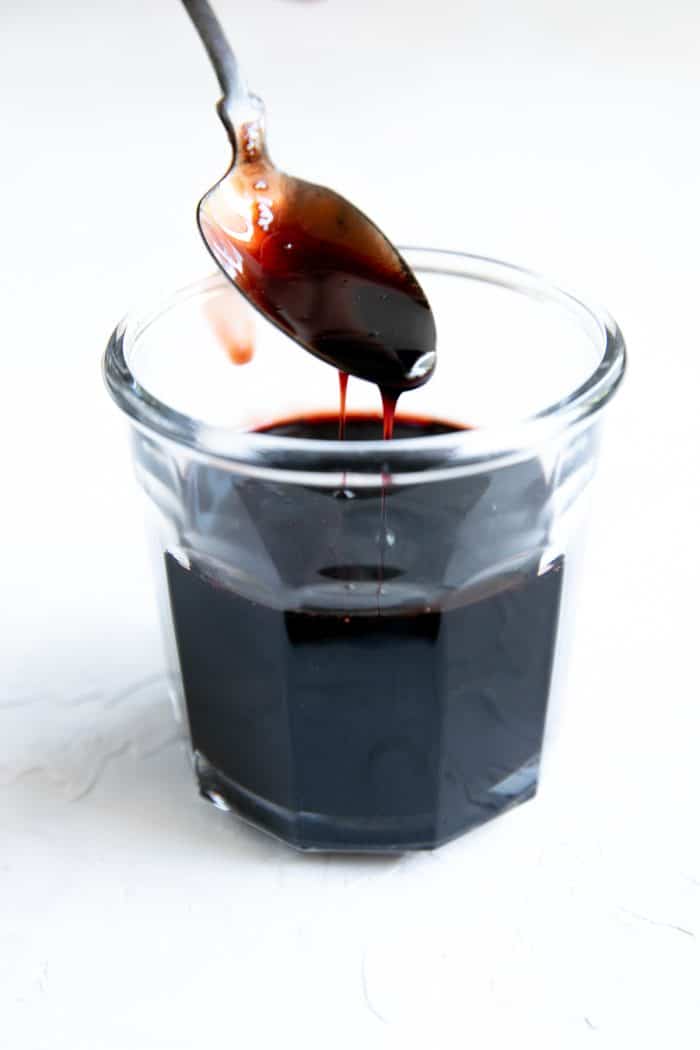
What is Pomegranate Molasses?
Pomegranate molasses, traditionally made by simply reducing pomegranate juice into a thick syrup, is a popular ingredient in many Middle Eastern recipes such as muhammara and fesenjān (pomegranate and chicken stew).
In some regions, sugar may be added to balance the tartness of the pomegranate juice and shorten the time it takes for the syrup to reduce and thicken. Fresh lemon juice may be added as an acidic preservative which helps increase the shelf life.
Ingredients
To make pomegranate molasses you will need the following,
- Pomegranate Juice – Anything other than fresh pomegranate juice will not work in this recipe. You may seed and juice your own pomegranates, or buy a big bottle of freshly squeezed pomegranate juice from the market (or the internet). Please don’t try to make this recipe with sweetened juice.
- Sugar – I added a half cup of granulated sugar. Just enough (in my opinion) to give it a nice sweet-to-tart balance. If you prefer yours less sweet, try adding 4-6 tablespoons of sugar.
- Lemon Juice – Fresh lemon juice will always taste better compared to anything that’s been concentrated, bottled, and preserved.
I chose to add both lemon juice and sugar to this particular recipe. Feel free to omit or reduce the overall sugar amount if desired.
How to Make Pomegranate Molasses
- Whisk together the pomegranate juice, sugar, and fresh lemon juice in a large saucepan and bring to a simmer, then reduce to low heat.
- Simmer, stirring occasionally, for about 60-75 minutes, or until the mixture has reduced to approximately 1.5 cups. It should have a sticky, syrupy consistency.
- Transfer to a clean jar with a tight-fitting lid. Cool before refrigerating.
Pomegranate Molasses Substitutes
There are several suggestions all over the internet for possible pomegranate molasses substitutes. I have not tried any of these personally,
- Honey and balsamic vinegar
- Tamarind paste with honey
- Tamarind paste cooked with dates
- Or buy it online!
Recipes with Pomegranate Molasses
Pomegranate molasses is surprisingly versatile and adds delicious flavor to a range of different recipes including dips, chicken, stews, and salad dressings.
Here 5 ways to use this homemade pomegranate molasses recipe:
- Stirred into hearty meat stews. One of the most well-known uses for pomegranate molasses is fesenjān, an Iranian stew made with ground walnuts, chicken (or lamb), and pomegranate paste. You may keep things simple and add a few tablespoons to any beef, lamb, or chicken stew.
- Added to salad dressings. Replace the vinegar in your next vinegarette with pomegranate molasses, or simply add a couple of teaspoons. Either way, it adds a nice, complex flavor to any salad.
- Drinks and cocktails! It seems that everything has so much sugar these days. Just a few teaspoons of molasses will add a little sweet, tart, and beautiful ruby red color to your next cocktail or mocktail.
- Drizzled over roasted vegetables. Drizzle this stuff over all your favorite roasted vegetables including, roasted carrots, roasted Brussels sprouts, or roasted asparagus.
- Glazes and Marinades. Add it to a marinade or brush directly onto your meat as it cooks. It adds the perfect amount of tartness and sweetness without overpowering the dish. Try for yourself with oven-roasted citrus chicken with pomegranate molasses marinade.
When is Pomegranate Molasses Finished Cooking?
As a general rule in science and nature, liquids will be thinner or more watery when heated because the molecules are moving erratically, bumping into each other, and breaking bonds. When liquids begin to cool, the molecules calm down, move less, and start to form bonds – the key difference between a liquid and solid state.
Of course, it’s much more complicated than this, but generally speaking, that’s the general overview.
When cooking pomegranate molasses you’ll have to determine its doneness from a heated state. This can be somewhat tricky (and also why it’s easy to burn your molasses), but easy to avoid by looking for the following,
- Keep an eye on the bubbles. The bubbles will start to look thicker, stickier, more viscous.
- Dip a spoon in there. Does it coat the spoon? That’s a good indication that it’s nearly done.
- From four cups of pomegranate juice, the yield should be somewhere between one and a quarter cups to one and a half cups.
Tips and Tricks
- Pomegranate molasses that is made with fresh pomegranate juice will have a brighter, more radiant red color when compared to pomegranate molasses made with store-bought juice.
- You can overcook your pomegranate molasses. The consequence? A super thick substance that practically hardens once cooled. As you may imagine, a batch of molasses that is so hard you can’t scoop it from the jar makes it pretty hard to use. To avoid this, keep a close watch on your molasses, especially after 40 minutes or so, and reduce the heat as needed.
- For tarter pomegranate molasses, add less sugar. For a sweeter one, add more.
Looking for more delicious sauce recipes? Try these reader favorites:
- Chimichurri Sauce Recipe
- Enchilada Sauce
- Mole Sauce
- Marinara Sauce
- Garlic Butter Sauce
- Honey Mustard Sauce
- Tartar Sauce Recipe
Have you tried making this Pomegranate Molasses Recipe?
Tell me about it in the comments below! I always love to hear your thoughts. And tag me #theforkedspoon on Instagram if you’ve made any of my recipes, I always love to see what you’re cooking in the kitchen.

Pomegranate Molasses Recipe
Ingredients
- 4 cups pomegranate juice, fresh or fresh bottled
- ½ cup sugar
- 3 tablespoon fresh lemon juice
Instructions
- Add ingredients to a medium saucepan set over medium heat. Add the pomegranate juice, sugar, and fresh lemon juice to a wide and uncovered saucepan set over medium heat. Whisk well to combine and bring to a simmer. Reduce to low heat, maintaining a low and steady simmer.
- Reduce. Simmer, stirring occasionally (to prevent the sugars from burning to the bottom of the pan), for approximately 60 minutes, or until the mixture has reduced to approximately 1.5 cups and has reached a sticky, syrupy consistency.
- Store. Transfer the prepared pomegranate molasses to a clean jar with a tight-fitted lid. Allow it to cool before refrigerating.
Notes
- Pomegranate molasses may be stored in the refrigerator for up to 2-4 months.
Nutrition
Nutrition information is automatically calculated, so should only be used as an approximation.

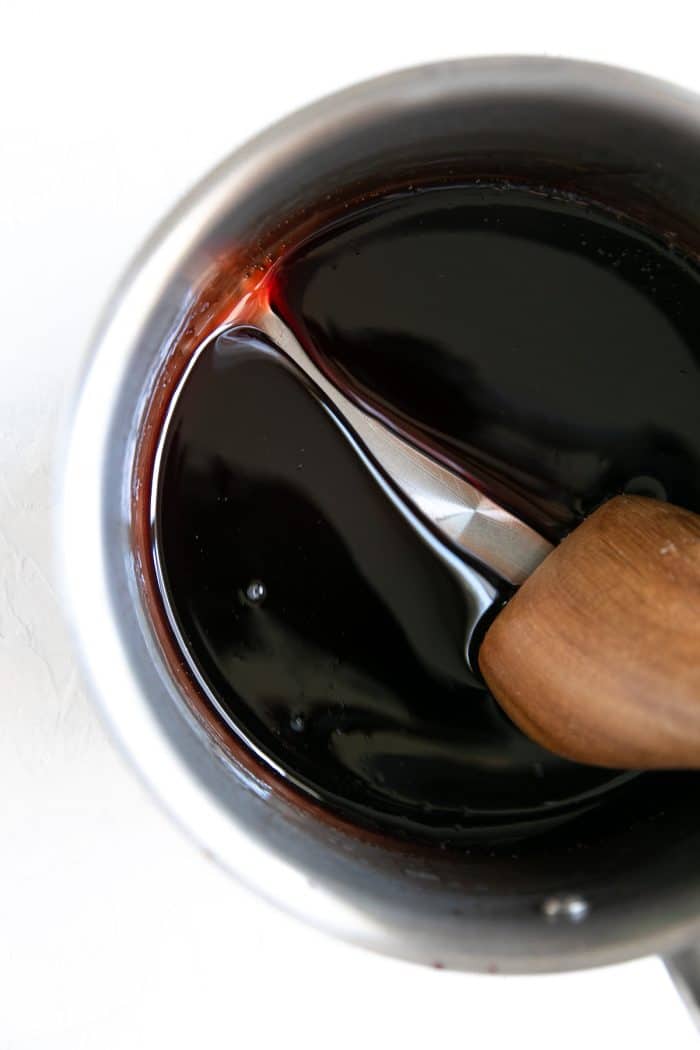
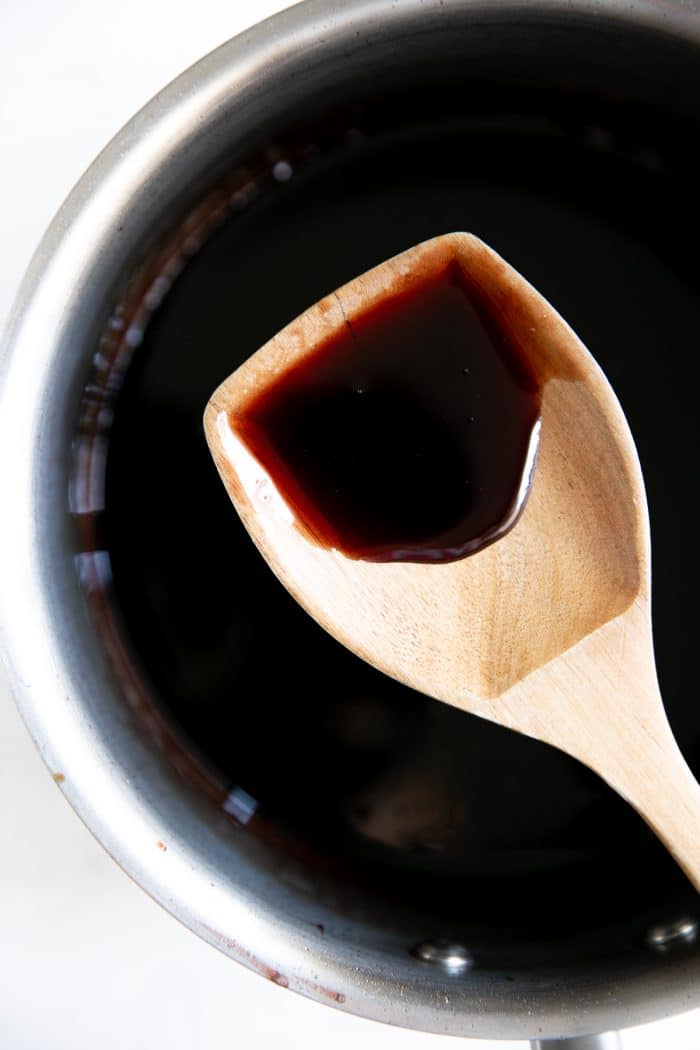

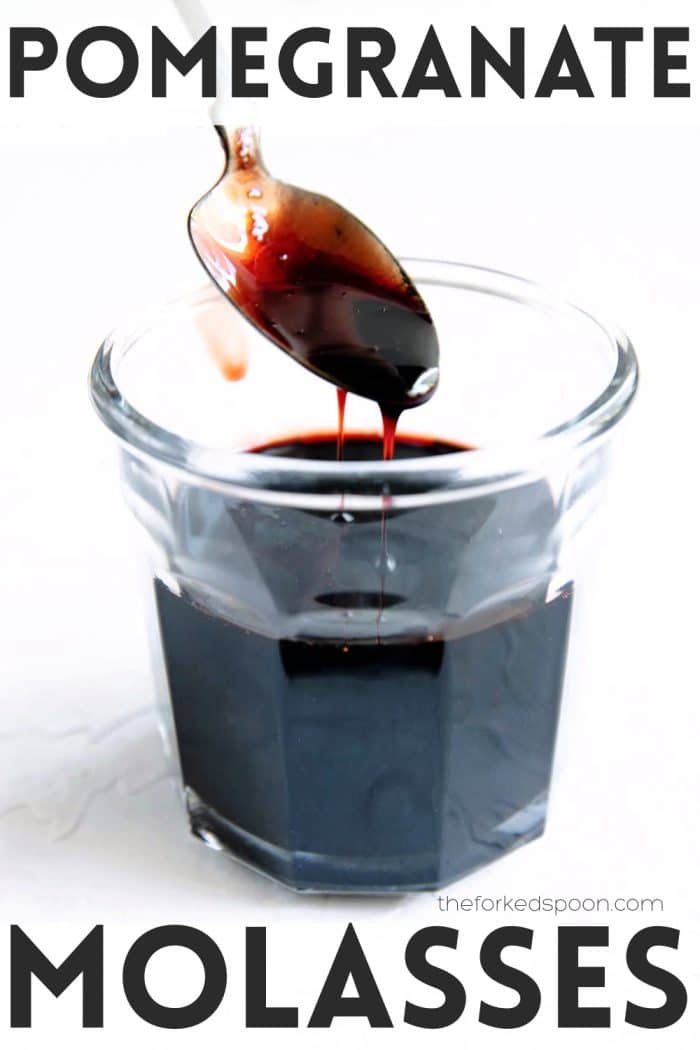



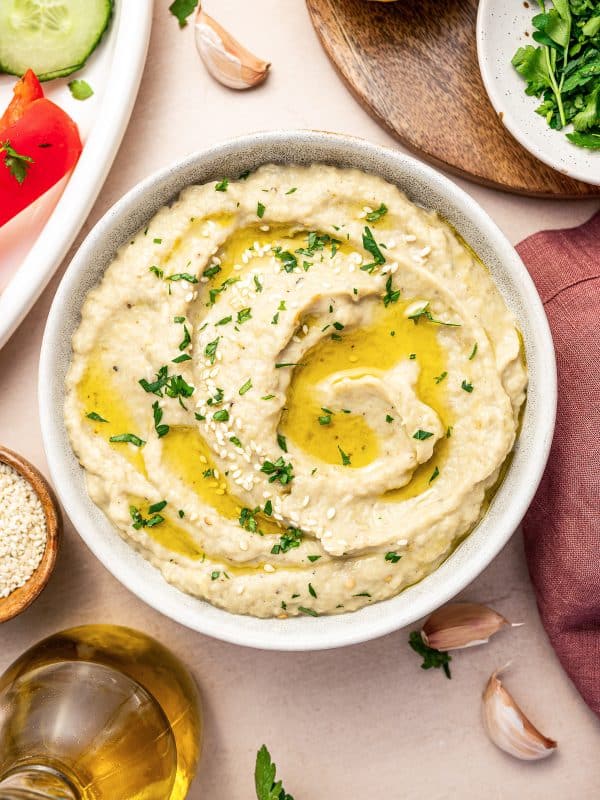
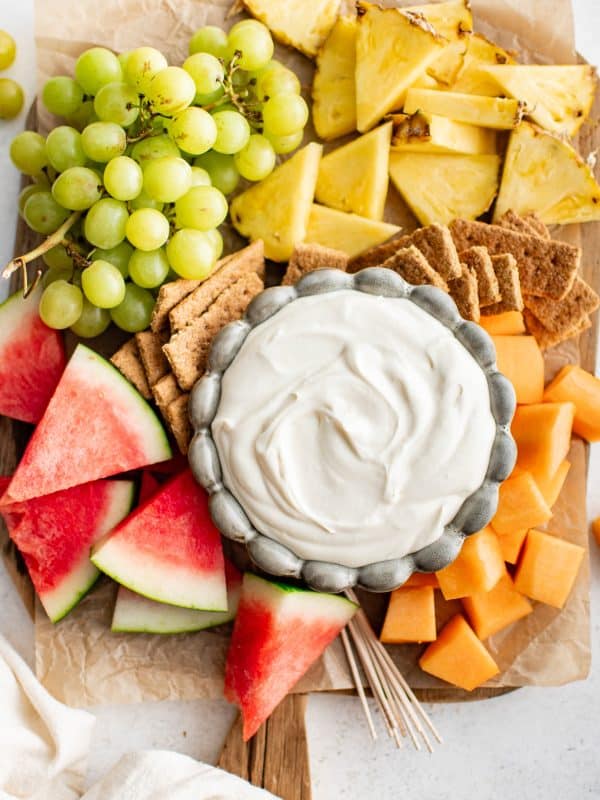








I purchased pomegranate molasses for a recipe I learned on Milk Street. Making it sounds better, it wasn’t easy to find and the store I purchase it from has since gone out of business. My biggest questions How Do I Juice Pomegranate Seeds? Please elaborate! Cheers.
Great question Deborah!
Simply blend the whole pomegranate seeds into a pulp in your blender. Then use a mesh strainer to strain the blended pomegranate seed pulp into a bowl below, and be sure to press down on the pulp in a strainer with a spoon or a large cooking spoon to get all the juice out while not staining your hands – that’s it 🙂
Wow learnt something new today. Pomegranate Molasses. Will it be sweet without the sugar? You could add a few drops of sweet (no sugar in it) and hot Ceylon Cinnamon Bark Oil instead of sugar. Cinnamon makes things taste sweet, negating the need to add too much sugar. Plus Cinnamon reduces blood sugar levels so if you add 1/2 the sugar and a few drops of the Cinnamon Oil you could be sugar neutral.